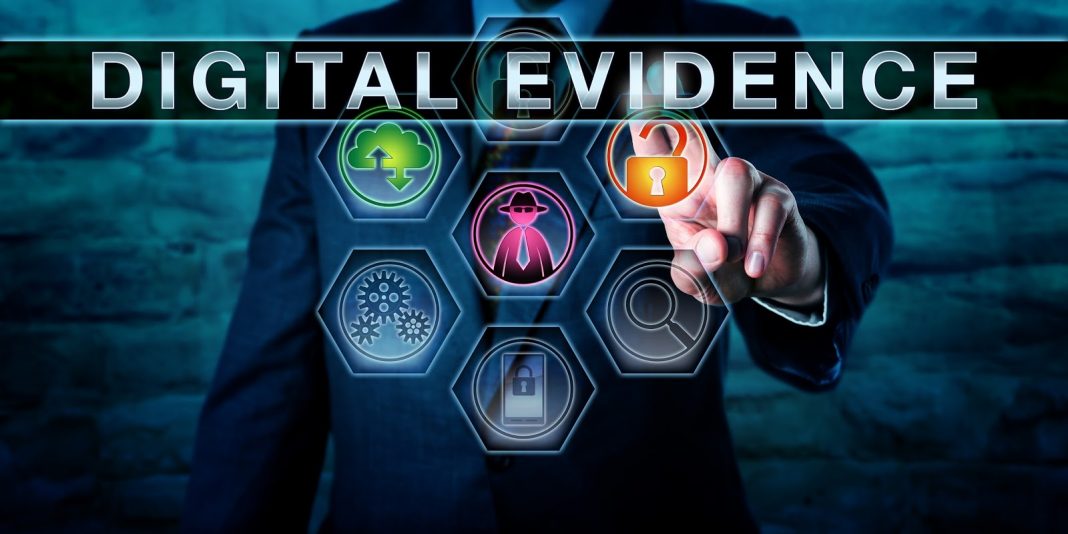Table of Contents
Introduction
We all are aware of the documentary evidence; what is the nature of the document, how it is required to be proved. In this article, we will study different topic i.e.; ELECTRONIC EVIDENCE, which is the recent emerging subject and undoubtedly the most controversial subject; in terms of proving an electronic document. So first we should know the background as to why and how the concept of electronic evidence came into existence.
Read this overview on Electronic Evidence by Rukshana Badar; a student of Law at Maharishi Dayanand University, Faculty of Law, Rohtak.
Origin of Electronic Evidence
Nowadays as a part of the change in our society in every field, we see so many changes and improvements; in the same way, we are also seeing the advancement of technology. We use so many gadgets, in fact; we have become slaves of these gadgets such as mobile phones, computers, online payments, and transactions; debit cards, credit cards, ATMs Paytm, and much more.
Just with a single mobile phone, we can connect to the entire world, make agreements, takes photos, makes videos, etc. These things also come into picture when cases or disputes arise in court. So in order to prove electronic evidence, necessary changes are also required to be made in the law.
- Therefore, In the year 2000; major changes were made in the law by the enactment of the Information Technology Act, 2000.
- And various amendments were made in other acts such as; the Evidence Act, Indian Penal Code, Banker’s Books Evidence Act, and Reserve Bank of India Act.
What is Electronic Evidence?
The term digital evidence or electronic evidence is defined by Case (2004) as “Digital Evidence or Electronic Evidence is any helpful information; which is stored or transmitted in a digital form that can be used by the party at trial”.
Electronic Record: What is it?
The term ‘electronic records’ provides for data, record or data generated, image; or sound stored, received, or sent in an electronic form; or microfilm or computer-generated microfiche.
Electronic Form
The term “Electronic form” means; any information generated, sent, received or stored in media, magnetic, optical, computer memory, microfilm, computer-generated microfiche; or similar device; whereas the term “Information” includes; data, text, images, sound, voice, codes, computer programs, software, and databases; or microfilm, or computer-generated microfiche.
Section 3 of the Evidence Act, 1872 defines evidence as under :
Evidence means and includes: all documents including electronic records produced for the inspection of the court.
Admissibility of Electronic Evidence
Section 65 A and Section 65 B were added to the Indian Evidence Act; which deals with the admissibility of electronic evidence.
# Section 65 A Indian Evidence Act
Section 65 A which talks about the admissibility principle state that; contents of the electronic records may be proved in accordance with the provision which is mentioned in Section 65 B. So, Section 65 A simply says that; the admissibility of electronic evidence proved before the court of law in accordance with the procedure; which is provided under Section 65 B.
Section 65 B
Section 65 B says that a computer output produced before the court as an electronic record under Section 65 B(1), it has to be treated as the original; further original source of that document is not required to be proved before the court of law; and the condition which are mentioned under section 65 B (2) to (5) are fulfilled.
Conditions for the admissibility of electronic evidence:
Before a computer output is admissible in evidence, the following conditions as set out in Section 65 (B)(2) must be fulfilled:
- The electronic record is generated by the computer which is used regularly; and is in the possession of the person who is authorized to keep; or have lawful control.
- That document or that record has been prepared in the ordinary course of nature.
- The computer is technically in the sound position that the accuracy of the document or the record is not affected.
- The information has been a generation in the ordinary course of the activity from that computer.
So, if the electronic record is produced by the computer in such a manner; then it has to be treated as an original document.
Section 65 B (4) states that to satisfy the conditions which are mentioned in Section 65 B; a certificate of authenticity signed by a person occupying a responsible official position is required; which must identify the electronic record that contains the statement; which describe the manner how it was prepared; give details of any device or tool involved in the production of the electronic record by a computer; and deals with any of the matters to which the conditions for admissibility relate.
Important Landmark Cases
#1. State Vs. Navjot Sandhu (2005) 11 SC 600
In this case, the certificate under section 65 B was not filed. The Supreme Court held that even if there is no certificate then also; we can read that evidence as per Section 63 and Section 65 of the Indian Evidence Act as secondary evidence.
#2. Anvar P.V. Vs. P.K. Basheer (2014 10 SCC 473)
This judgment states with regard to the strict application of Section 65 B. It was held that secondary evidence is not permissible without a certificate U/S 65 B. The certificate is mandatory, and the requirement given under this section must be complied with.
#3. Safhi Mohammad Vs. State of Himachal Pradesh (SLP No.2302 of 2017)
In this case, it was clarified that; if a person is not in a position to produce an electronic certificate as per section 65 B; then also the evidence can be admissible. The reason given was that there may be some kind of evidence; when a person is not personally producing from his own source.
#4. Abdul Rahaman Kunji Vs. The State of West Bengal (MANU/WB/0828/2014)
It was held by the Kolkata High Court that if an e-mail is downloaded; and printed from the e-mail account of the person can be proved by virtue of Section 65B.
Conclusion
With the advent of technology, it was necessary to enact a new law; and amend the old law to deal with the issue of cybercrime. Hence by enacting the IT Act, 2000 and amending the statutes such as; Indian Evidence Act, 1871, IPC, 1860, and Banker’s Book Evidence Act, 1891; certain provisions are provided to ascertain the standard of proof and appreciation of electronic evidence, i.e., evidence in electronic form. For the purpose of admissibility of an electronic record, a three-prong test is important for Prosecution:
- Document in question is an electronic record,
- Produced by a computer, and
- Accompanied by a certificate, fulfilling the conditions laid down Section 65 (B)(2) -(B)(4) of the IT Act or proven by way of secondary evidence.
Technology & Law goes hand-in-hand
While deciding various cases, Courts have recognized the electronic evidence in various forms such as; CDs, emails, tape records, IP addresses, telephone records, etc., So also certain steps are required to be followed; and care should be taken while collecting the e-evidence. Although the present law of evidence has been amended; the law will have to be amended as and when required with new technological development.

